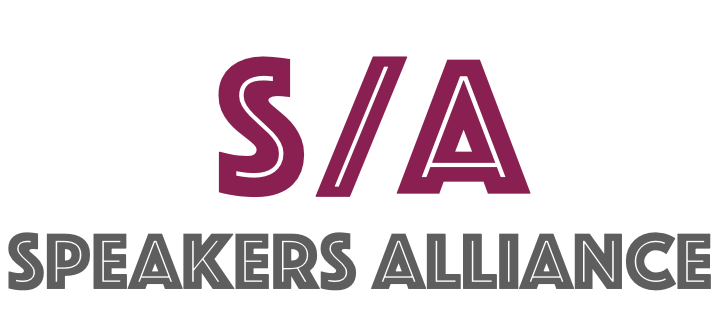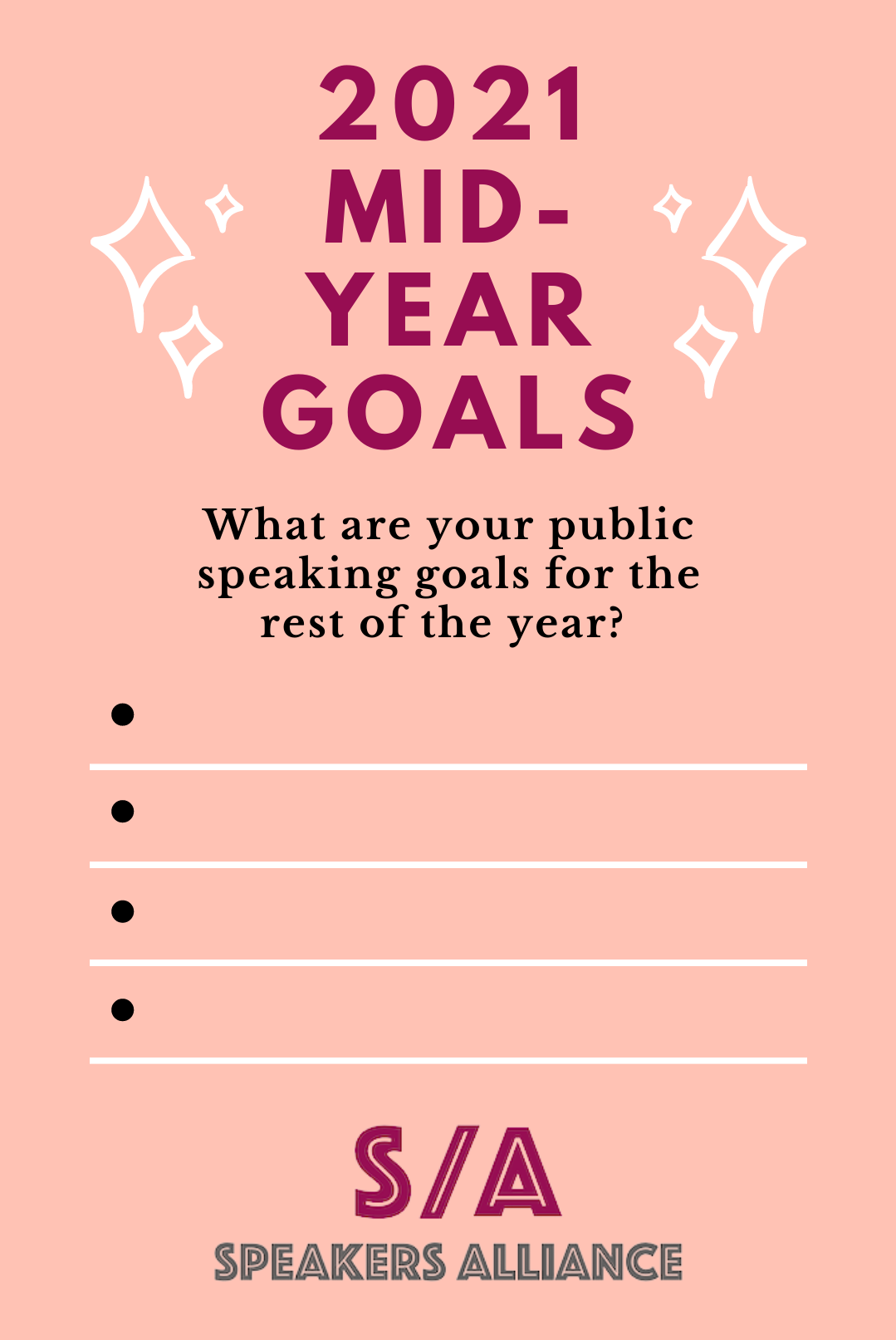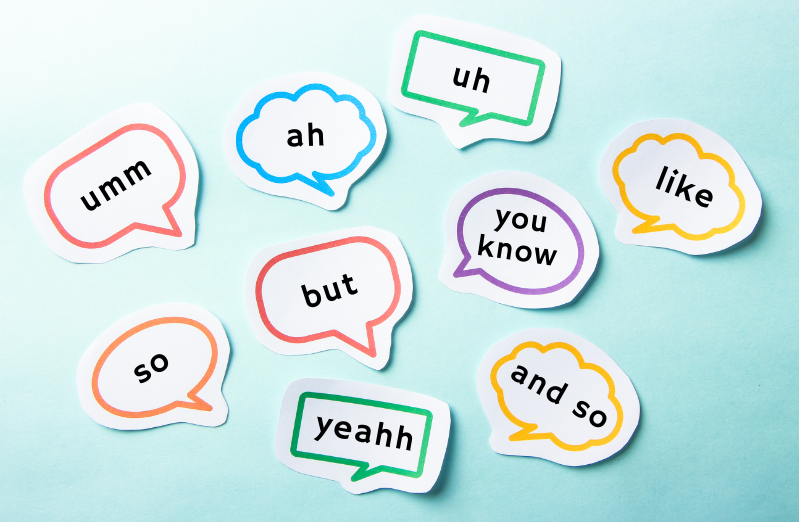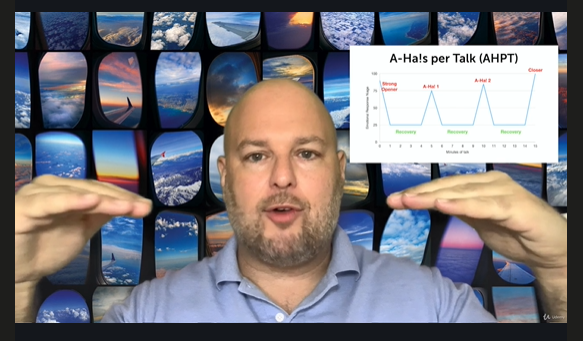I completed The A-Ha! Method: Public Speaking in a Time of Distraction course on Udemy in April. It took me about 6 weeks to get through the course at a leisurely pace, and I was very happy and excited about what I learned.
Full transparency: Gabe sent me this public speaking course to review before I started working with Speakers Alliance. I was a bit skeptical, thinking I already know a lot about general public speaking tips after 7 years in Toastmasters (Overconfident much?). What I learned from taking the course is: I still have so much to learn if I want to take my speaking game to the next level!
I’ve asked Gabe why he calls it the A-Ha! Method. Is the A-Ha! Method mostly about the way to organize presentations with the different A-Ha! moments per talk, or is it about his public speaking techniques and advice? He said it refers to BOTH. The A-Ha! Method was developed with the A-Ha! moments per talk in mind, but it is also refers to what he has learned in his career as a speaker—the many A-Ha! lightbulb moments he has experienced throughout his professional public speaking journey.
His advice and lessons learned can help us as speakers too, no matter where we are on our own speaking journeys. I appreciate the tips and lessons learned, so that I don’t have to make all those mistakes on my own. While I will certainly make plenty of mistakes, I can limit my “newbie” mistakes at least by listening to and learning from professionals who have done this plenty of times before me.
Here are some of the key tips and lessons I learned from this public speaking course:
Most Helpful Tips: Organizing and Editing
- Organizing your speech using the A-Ha! moments
- One way to organize your speech is think about your speech in Acts 1, 2, and 3 and then organize each act effectively with an A-Ha! moment, if applicable.
- The A-Ha! moments are strategically placed in your speech and have a recovery period afterwards. The A-Ha! moments are those parts in your speech that make your audience get chills or the hairs rise up on their necks and/or they are 100% focused on what you are saying.
- You have to be strategic about your A-Ha! moments though. If you place them one after the other in a bulleted list, they will get lost. You have to place them perfectly in your speech so the audience feels the effect. Then you can have a recovery period— not where you stop talking but where you keep reinforcing that idea without letting them lose focus on that idea. Then, you will ramp up to the next A-Ha! moment.
- I have probably done something similar to this without even thinking about it, however I probably did not do it well or effectively by using the recovery periods. Lots of improvement to be made there!
- The Speaking Event Checklist Resource
- This was very helpful in understanding the amount of information you need to collect when scheduling your speeches with the event organizers. This is a great way to keep everything organized and make sure you have all the details needed before, during and after the event.
- This checklist can be used for both paid and unpaid speaking events that you schedule and also for online and on-site presentations.
- I plan to use this spreadsheet as I start booking more presentations! 😃
Most Relevant Tips: Slides and Virtual Talk Resources
- Slides, Tech and Tactics Section
- There are over 2 hours of content about slides, tech and tactics that Gabe uses to take his presentations and pitches to the next level.
- Gabe suggests a general rule of 1 slide per minute and 1 idea per slide and explains this more in depth. I have worked on implementing this rule in my corporate presentations recently, and it has helped!
- Watching this section, I realized how much work my slides need. I like to do a long list of bullets sometimes, and the main thing to remember with slides is to keep it simple.
- I don’t put a ton of effort or thought into my slides. I know there is quite a debate about Powerpoint vs other presentation software. I feel comfortable using Powerpoint, but Gabe makes a good case to look into other presentation software and improve your slides with better images/graphics and less words and text.
- Virtual Talk Supplements
- There are 30 minutes of bonus content on this subject, which is very relevant right now of course.
- Gabe has an excellent tip of restarting your computer and having a presentations user on your computer and using that for when you have presentations. This is such a simple yet powerful suggestion to help decrease the chances of computer freezes or hiccups. I have implemented this for my big presentations, and it has helped me feel more at ease!
- Also, I always need a reminder about the eyelines and focus. I have a tendency to look at the gallery view. I know better, but that doesn’t mean I am always perfect at this.
Biggest A-Ha! moment when taking the course: The editing process!
- Iterative and editing process
- Learning about Gabe’s editing and iterative process blew my mind! Good speakers make it look so effortless that I forget how much time and effort they put into each talk. I know speakers spend a ton of time practicing their content, but this course made me realize I have some major improvements to make in this area.
- Gabe recommends his iterative process over straight memorizing because it will make you come off more natural and authentic. However, just because it’s not memorized, doesn’t mean he is just winging it. He practices over and over and over again until he knows his material so well that he could do it with his prepared slides or without them. That’s impressive!
- Recognizing the amount of organization and preparation it takes to do this job was very influential and helpful to me as I continue to grow in my career as a professional speaker. Even if you don’t want to be a professional speaker though, these tips are still helpful as you may have to give big presentations at work and conferences.
There are so many tips and tricks in the course, and it would be a really long article to write up everything I liked about it. I found the course so helpful in thinking about my professional career, and I realized I have so much to learn, which is a good thing! There are always ways you can improve your speeches and grow your craft, and that is very exciting to me!
Next Steps
I plan to go through the class again and take better notes and go through all the resources. The good part about the course is that it never expires or goes away once you purchase it.
The course is great for being able to organize your speeches better and effectively. However, you need to also practice these new lessons learned. Each month the Speakers Alliance runs a few FREE Public Speaking Practice Clinics for people looking to improve their public speaking skills and practice their material. We will discuss different public speaking topics, answer questions, and provide feedback for as many 5-6 minute presentations and pitches as possible. Your speech or pitch doesn’t have to be fully prepped or memorized. The practice sessions are a safe place for you to practice, get your ideas out there and learn.
We will be adding practice sessions each month. Follow us on social media for the most up to date announcements.
Check out the public speaking course on Udemy and join us for a practice session or two or three (as many as you would like!). Practice makes great progress, and Speakers Alliance is here to help you with all your public speaking needs and practice resources.














